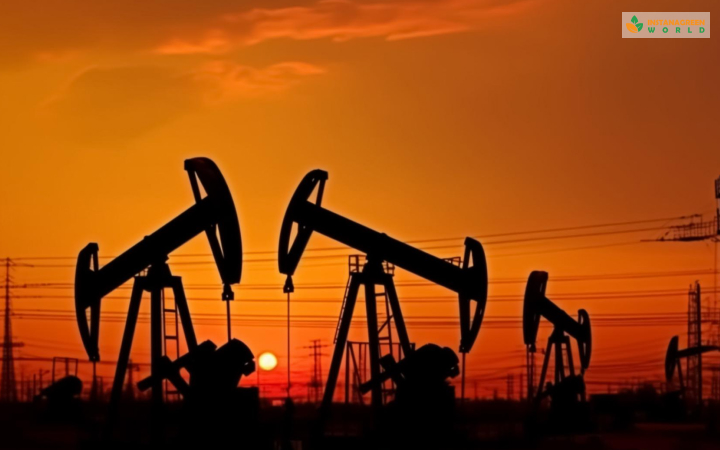Fossil fuels are hydrocarbons, primarily coal, fuel oil, or natural gas, formed from the remains of dead plants and animals. The term “fossil fuel” is derived from the fact that these energy sources come from the fossilized remains of ancient living organisms.
Fossil fuels are considered non-renewable resources because their formation takes millions of years, and they are being consumed much faster than they can be replenished.
Understanding Fossil Fuel

Fossil fuels have been the dominant source of energy for much of the industrial era due to their high energy density and ease of transport. However, their combustion releases carbon dioxide (CO2) and other greenhouse gases into the atmosphere, contributing to global climate change.
The environmental impact of fossil fuel use, coupled with concerns about resource depletion, has led to increased interest in alternative, cleaner energy sources such as renewable energy (solar, wind, hydro, geothermal) and efforts to improve energy efficiency.
Types, Formation, And Uses Of Fossil Fuel

- Coal
- Petroleum
- Natural Gas
Coal
Coal is basically a black colored, semi-hard rock formation that is made up of nitrogen, oxygen, carbon, sulfur, and hydrogen. There are major types of coal, such as lignite, bituminous, and anthracite.
Lignite has a high concentration of hydrogen and oxygen, but the carbon concentration is low. Bituminous has a moderate concentration of coal, whereas anthracite has a high concentration of carbon and it is the hardest coal type. The coal is formed in an industry; it is derived from coal gas, coal tar, and coke.
Formation Of Coal
- The process of how coal is formed is called coalification.
- Millions of years ago, the low lying wetland buried the dense forest in the present-day earth.
- As the soil got compressed, it kept on depositing over them.
- As the deposition got deeper and deeper, they faced high pressure and temperature.
- Now, as a result, these substances are converted slowly and steadily into coal.
Uses Of Coal
- Coal is used to produce railway engine steams in the beginning stages.
- It is then used for making food.
- Coal is also used to make electricity in the thermal plants.
- It is also used in certain industries as fuel.
Petroleum
- Petroleum looks like a clear liquid that usually appears green or black in color. Usually, petroleum has a strange smell to it as it is a mixture of diesel, petroleum gas, petrol, paraffin wax, lubricating oil, etc.
- This is why petroleum is also known as ‘Black Gold’ since it has a wide range of needs and uses in most industries.
Formation Of Petroleum
- Once sea plants and animals die, these bodies get settled down at the bottom of the sea bed.
- That is where they get settled down and get compressed under layers and layers of clay and sand.
- There, they receive high pressure and temperature that convert these remains into petroleum.
- This petroleum then gets separated from crude oil by means of processes in a refinery, which is also called petroleum refining.
Uses Of Petroleum
- Petroleum is often used to power internal combustion engines in different forms, such as petrol.
- It is also used as a repellent for roofing and road pavements.
- Petroleum is also used in plastics, fibers, manufacturing, detergents, polythene, etc.
Natural Gas
- Natural gas is basically a clean and non-toxic type of fossil fuel. This is an odorless and colorless gas that can easily be transferred through pipelines.
- And it gets stored as compressed natural gas (CNG) under higher pressure. Which is why it is a less expensive and polluting fossil fuel. Among all the other natural gases, Methane is the most important one.
Formation Of Natural Gas
- The zooplanktons and phytoplanktons usually sink at the bottom of the ocean and mix with the organic materials in order to form an organic-rich mud.
- The mud then gets buried beneath more and more lithified sediment to form an organic shale. That prevents exposure to oxygen. This is done so that the organic material decomposed by bacteria is protected.
- Then the pressure and temperature increase transforming this shale into a wavy substance, which is known as Kerogen.
- Between a temperature of 90-160°C, this Kerogen transforms into natural gas.
Uses Of Natural Gas
- Compressed Natural Gas, or CNG is used mainly to generate power.
- It is also used in automobiles as fuel.
- Natural gas can also be used for cooking at home.
- Natural gas is also used as the starting material for chemicals and fertilizers.
Advantages & Disadvantages Of Fossil Fuels

The advantages and disadvantages of fossil fuels are listed below, so give them a look.
Advantages
While the use of fossil fuels has been a major driver of industrialization and economic development, it’s important to note that significant environmental and sustainability challenges often accompany these advantages.
- Energy Density:
Fossil fuels have a high energy density, meaning they contain a large amount of energy per unit of volume or weight. This makes them efficient for transportation and energy production, providing a reliable and concentrated source of energy.
- Reliability and Stability:
Fossil fuel power plants can provide a stable and consistent supply of electricity. Unlike some renewable energy sources that are intermittent (such as solar and wind), fossil fuel power plants can be operated continuously, providing a reliable source of power.
- Infrastructure Development:
The infrastructure for extracting, refining, and transporting fossil fuels has been well-established over the years. This infrastructure has played a crucial role in supporting industrialization, transportation, and economic development.
- Versatility:
Fossil fuels are versatile and can be used for various purposes, including transportation, electricity generation, heating, and as raw materials for the petrochemical industry. This versatility has contributed to the widespread adoption of fossil fuels in different sectors.
- Economic Contributions:
The fossil fuel industry has been a significant contributor to national and global economies. It provides employment, tax revenue, and economic growth through activities such as exploration, extraction, refining, and distribution.
Disadvantages

While fossil fuels have been a major source of energy for several decades, their use is associated with a range of environmental, social, and economic disadvantages.
- Greenhouse Gas Emissions:
The combustion of fossil fuels releases large amounts of carbon dioxide (CO2) and other greenhouse gases into the atmosphere. These gases contribute to global warming and climate change by trapping heat in the Earth’s atmosphere.
- Air Pollution:
Fossil fuel combustion also releases pollutants such as sulfur dioxide, nitrogen oxides, particulate matter, and volatile organic compounds. These pollutants can have detrimental effects on air quality and human health, leading to respiratory issues and other health problems.
- Resource Depletion:
Fossil fuels are finite resources, and their extraction can lead to resource depletion. As easily accessible reserves are depleted, the industry must turn to more challenging and environmentally sensitive extraction methods.
- Environmental Degradation:
Extracting, transporting, and refining fossil fuels can cause environmental degradation, including habitat destruction, soil erosion, and water pollution. Oil spills, in particular, can have devastating effects on marine ecosystems.
- Water Usage and Pollution:
Fossil fuel extraction and power plant operations often require large amounts of water. Additionally, runoff from mining and drilling operations can contaminate water sources with pollutants, harming aquatic ecosystems and affecting drinking water quality.
Wrapping Up!
Well, there you go, with this detailed explanation of the importance of fossil fuels and what are the different types of fossil fuels that are being used on a regular basis.
So if you think that this article was quite helpful and informative, then all you need to do is give this article a like and comment below.
Read more..












